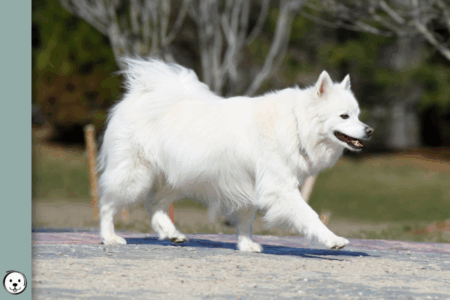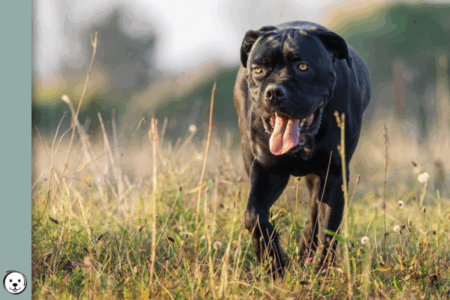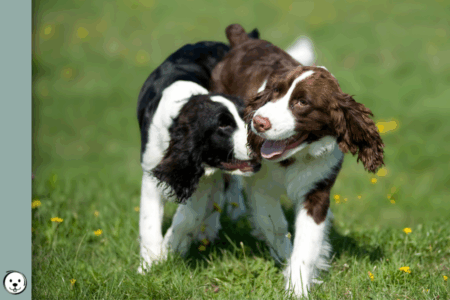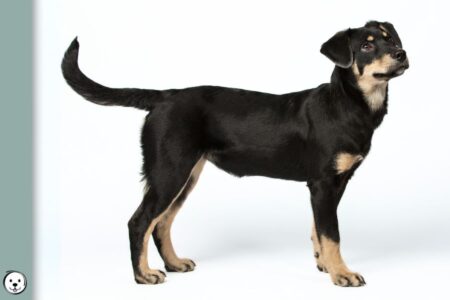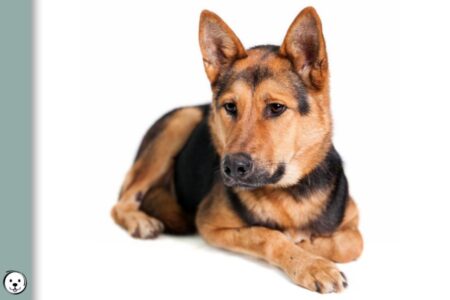An overview of English Mastiff colors and their genetics.
| Em/Em mask | ky/ky normal | kbr/- brindle |
| Ay/Ay sable | 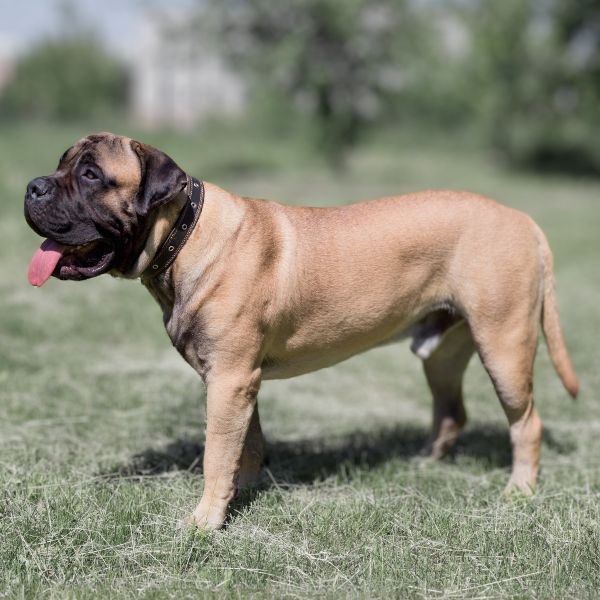 sable “fawn, apricot“ | 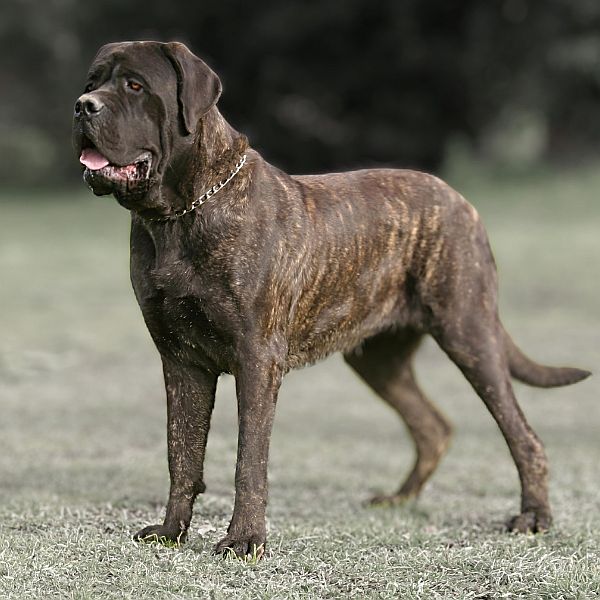 brindle |
English Mastiff Color Overview
A short discussion of breed standard patterns in the English Mastiff:
Sable

Mastiffs have a clear sable pattern (ky/ky Ay/Ay) in shades from light fawn to red apricot.
They always have a black mask (Em/Em).
| E LOCUS | K LOCUS | A LOCUS |
|---|---|---|
| Em/Em | ky/ky | Ay/Ay |
Brindle
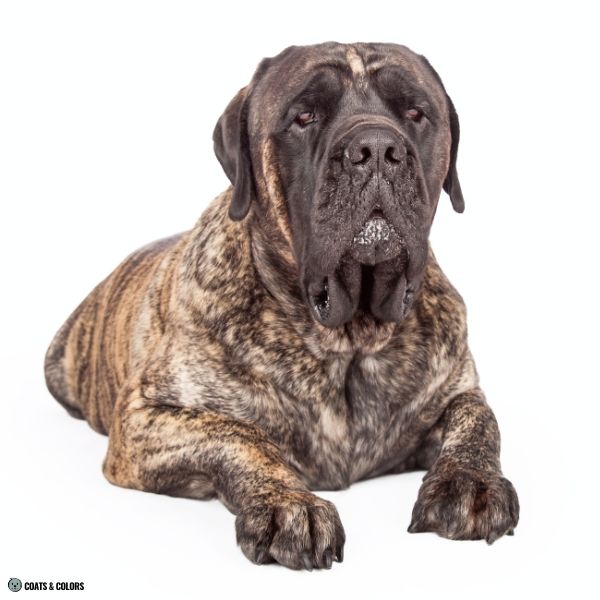
Brindle Mastiffs also have a clear sable pattern (Ay/Ay) and a black mask (Em/Em).
But they also have black brindle striping on top of their pattern (kbr/kbr or kbr/ky).
| E LOCUS | K LOCUS | A LOCUS |
|---|---|---|
| Em/Em | kbr/- | Ay/Ay |
English Mastiff Color Genetics Summary
All breeds select for certain patterns and against others. The only pattern an English Mastiff can have according to its breed standard is a black-based sable with a black mask and with or without brindle.
As a consequence, English Mastiffs only have some of the alleles associated with canine coat colors.
These are color traits known to occur in Mastiffs:
| E-LOCUS | Em = melanistic mask E = normal pattern |
| K-LOCUS | kbr = brindle ky = normal pattern |
| A-LOCUS | Ay = sable Ays = shaded sable (rare) |
| B-LOCUS | B = black |
| D-LOCUS | D = normal pigment |
| S-LOCUS | S = no spotting sP = piebald spotting |
| M-LOCUS | m = non-merle |
English Mastiff Colors
English Mastiff coat colors are fairly straightforward.
Eumelanin
All English Mastiffs are fixed for non-diluted black eumelanin (B/B D/D).
Their mask, their brindle striping (if present), their nose, eye rims, and lips will be black.

Phaeomelanin
The phaeomelanin comes in a range of shades from a light yellow “fawn” to a more orange-reddish “apricot“. But there is no clear definition where on this gradual scale a fawn turns into an apricot dog.

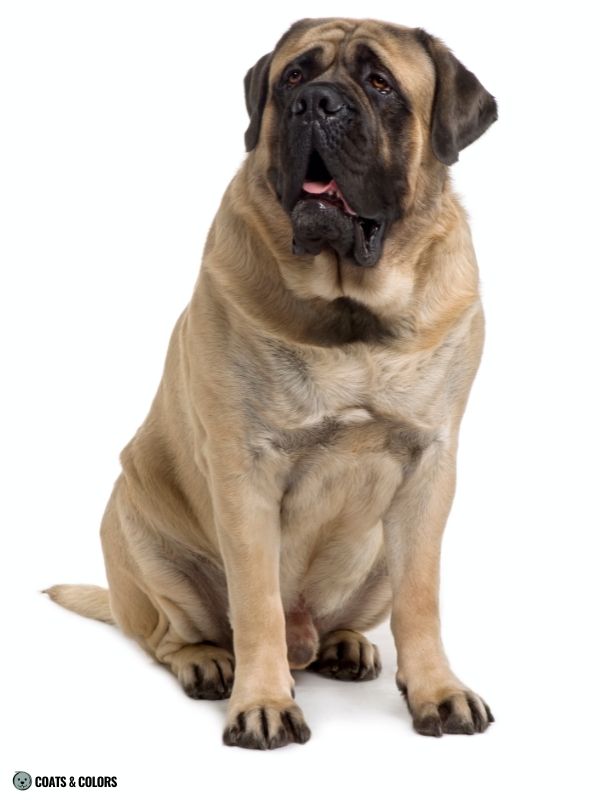
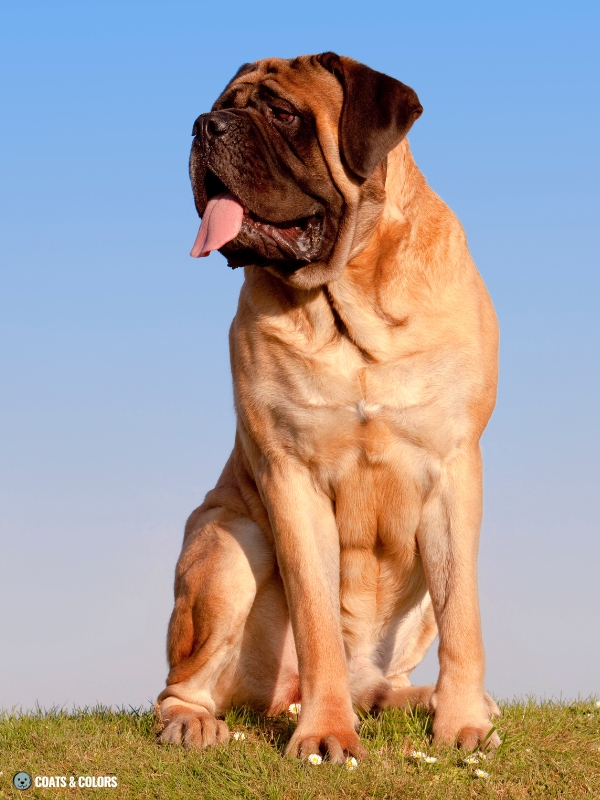
White Spotting
Residual white can cause some chest white or the odd white paw.
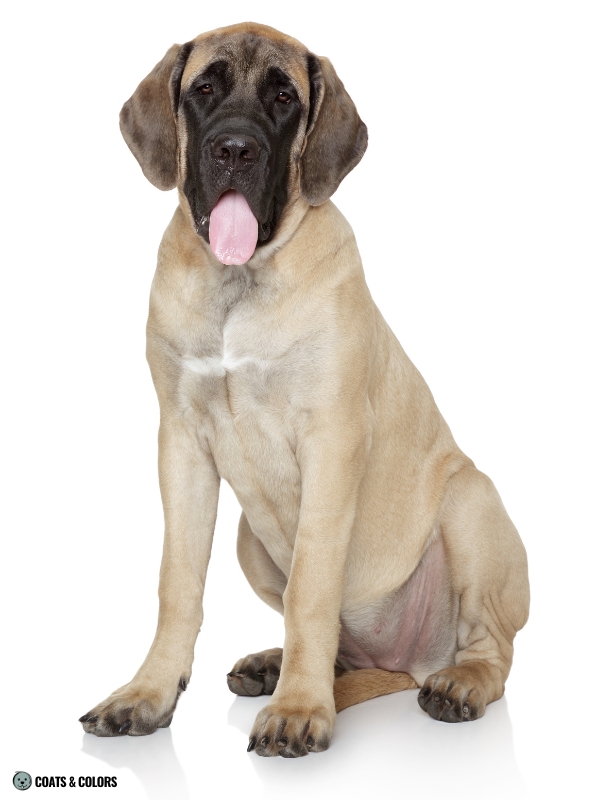
But any white spotting that goes beyond a small white patch on the chest is considered a mismark in this breed.
A small patch of white on the chest is permitted.
Mastiff AKC breed standard
Faults – Excessive white on the chest or white on any other part of the body.
Excessive white on body, chest or feet is unacceptable.
Mastiff FCI breed standard
Both of these dogs have an excessive white “tie” reaching from chest to throat:
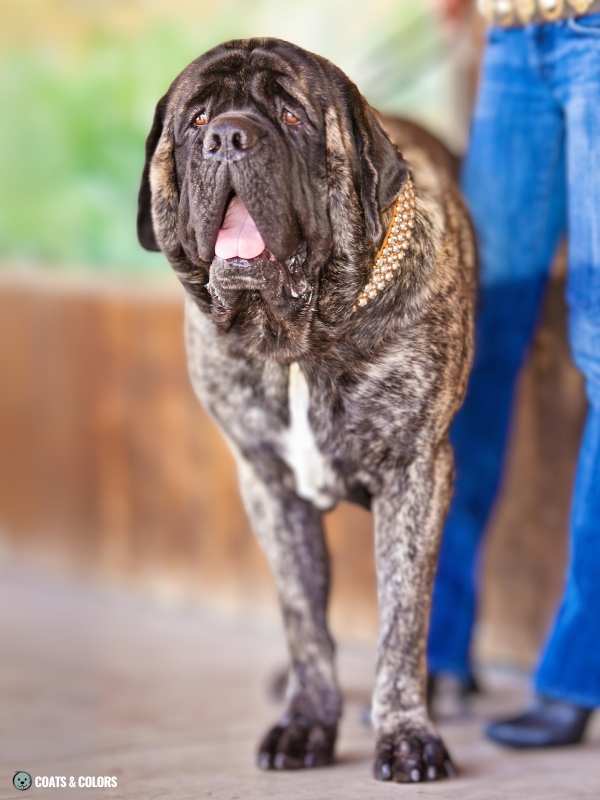

On top of that, piebald spotting also does occur at a low frequency in Mastiffs[3]. And though likely selected for minimal expression in heterozygous dogs (S/sP) it might still cause “too much white” overall.
And there is a chance for minimal whitehead expression also being in the breed.
Eye Color
The ideal Mastiff should have dark brown eyes.
Color of eyes brown, the darker the better, and showing no haw.
Mastiff AKC breed standard
Light eyes or a predatory expression is undesirable.
Colour hazel brown, darker the better, […]
Mastiff FCI breed standard
Nose Color
All English Mastiffs produce black eumelanin which can be observed in their nose pigment.
According to the AKC standard, “…the blacker the better…“.
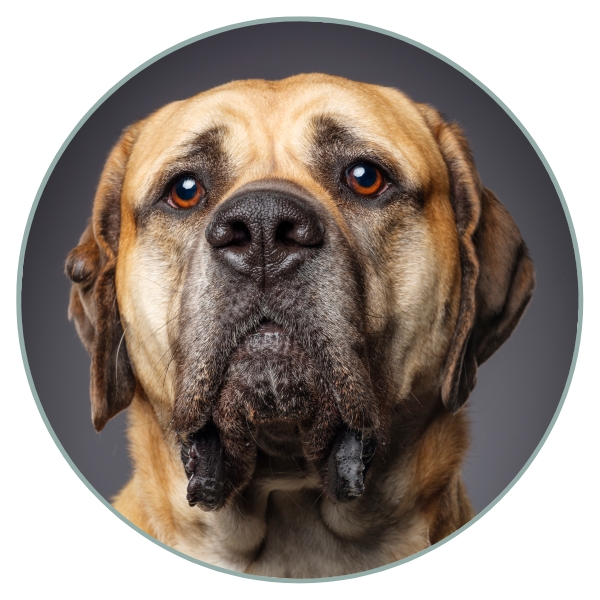
English Mastiff Patterns
What patterns can Mastiffs have?
-
Em/Em-
Ay/Ay-
ky/ky-
sable
-
-
kbr/--
brindle
-
-
-
A Locus
Mastiffs are fixed for a sable pattern (Ay/Ay).
With a phaeomelanin intensity ideally somewhere between a light “fawn” and an orangey “apricot“.


K Locus
The sable pattern can come with either clear (ky/ky) or brindled (kbr/-) phaeomelanin-pigmented areas.
Brindle patterns will cause moderate to dense black striping on top of the sable base coat.
Interestingly, the AKC standard requires that a Mastiff be “completely covered with very dark stripes,” indicating a preference against overly sparse patterns and perhaps even the odd seal brindle dog.

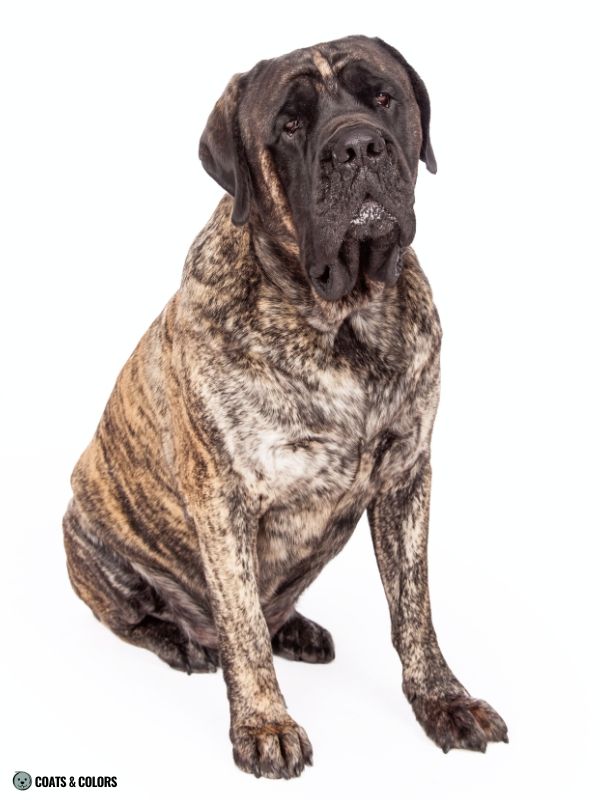
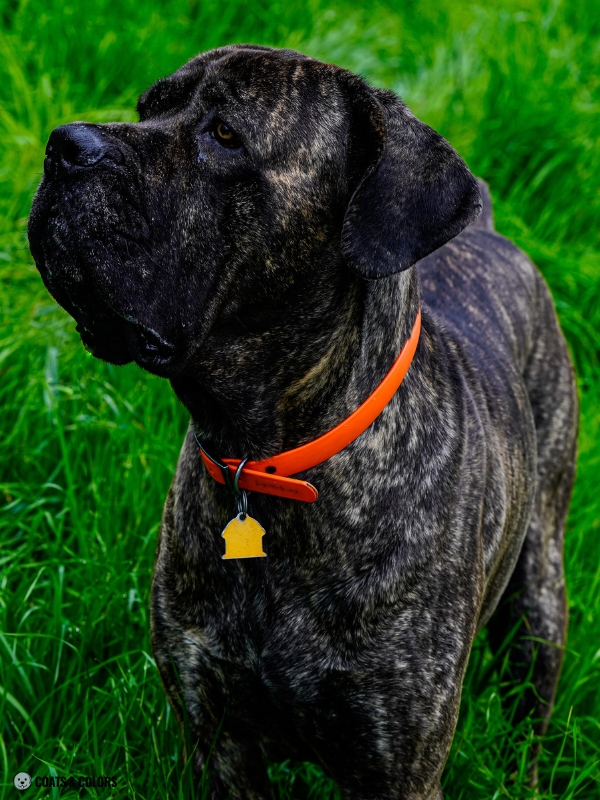
E Locus
Mastiffs are essentially fixed for a black mask (Em/Em) on top of their sable or brindle pattern.

Ideally, the mask should be richly pigmented and cover the muzzle and eyes. Black masks also tend to cause black hairs an the ears, which is even part of the Mastiff breed standards.
Some Mastiffs express a slightly extended mask that can reach up the forehead or even cause some dark shading on the chest and lower legs.
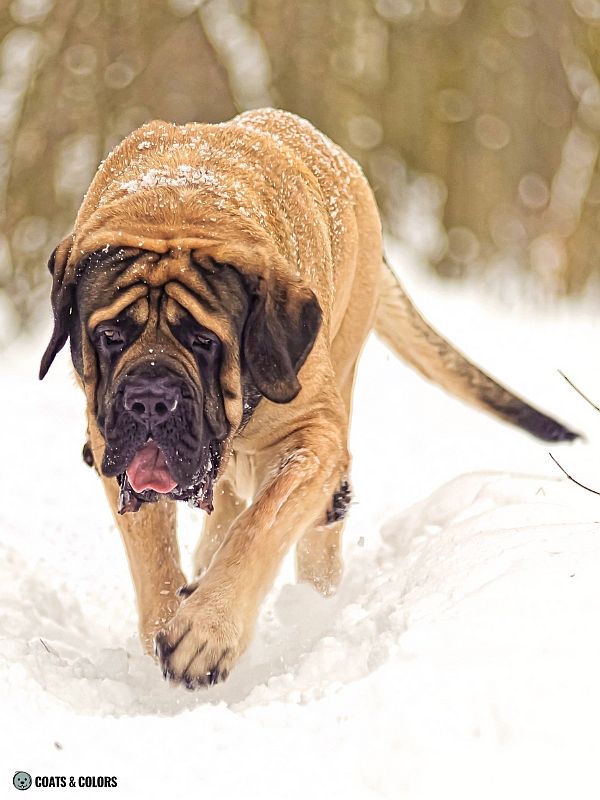
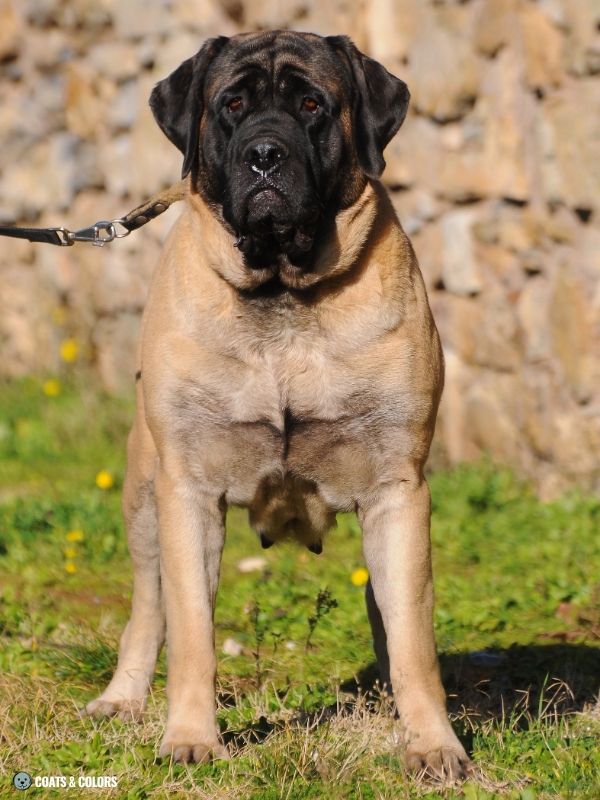
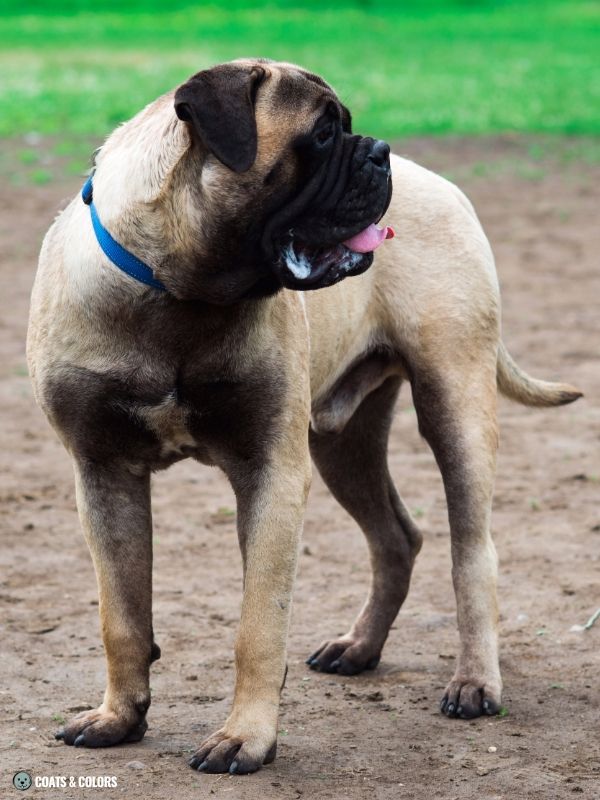
But the wild type allele (E) also occurs in the Mastiff breed[3].
Puppies with two copies (E/E) will not have a melanistic mask. However, due to the very low frequency, it’s highly unlikely to breed from two carriers (Em/E) by accident.
Muzzle, ears, and nose must be dark in color, the blacker the better, with similar color tone around the eye orbits and extending upward between them.
Mastiff AKC breed standard
In any case, muzzle, ears and nose should be black with black around eye rims, and extending upwards between them. Mastiff FCI breed standard
Mismarks
These are some non-standard colors that may be possible in the English Mastiff breed:
Dogs heterozygous for piebald spotting (S/sP) may express anything from minimal white to a pseudo-Irish pattern. Dogs with two copies of piebald spotting (sP/sP) may havevwhite markings on their chest, throat, paws, legs, muzzle, body, or tail.
Mastiffs born with two copies of the E locus wild type allele (E/E) will not have a black mask.
Dogs with two copies of shaded sable (Ays/Ays) might keep some of their black puppy shading and grow black-tipped hairs along the topline.
Learn More
Links
[1] American Kennel Club (AKC): Official Standard for the Mastiff (pdf)
[2] Fédération Cynologique Internationale (FCI): Mastiff Breed Standard (pdf)
[3] Dreger et al. (2019). True Colors: Commercially-acquired morphological genotypes reveal hidden allele variation among dog breeds, informing both trait ancestry and breed potential. PLoS ONE 14(10): e0223995. https://doi.org/10.1371/journal.pone.0223995
[4] The Mastiff Club Of America: The Illustrated Mastiff Standard
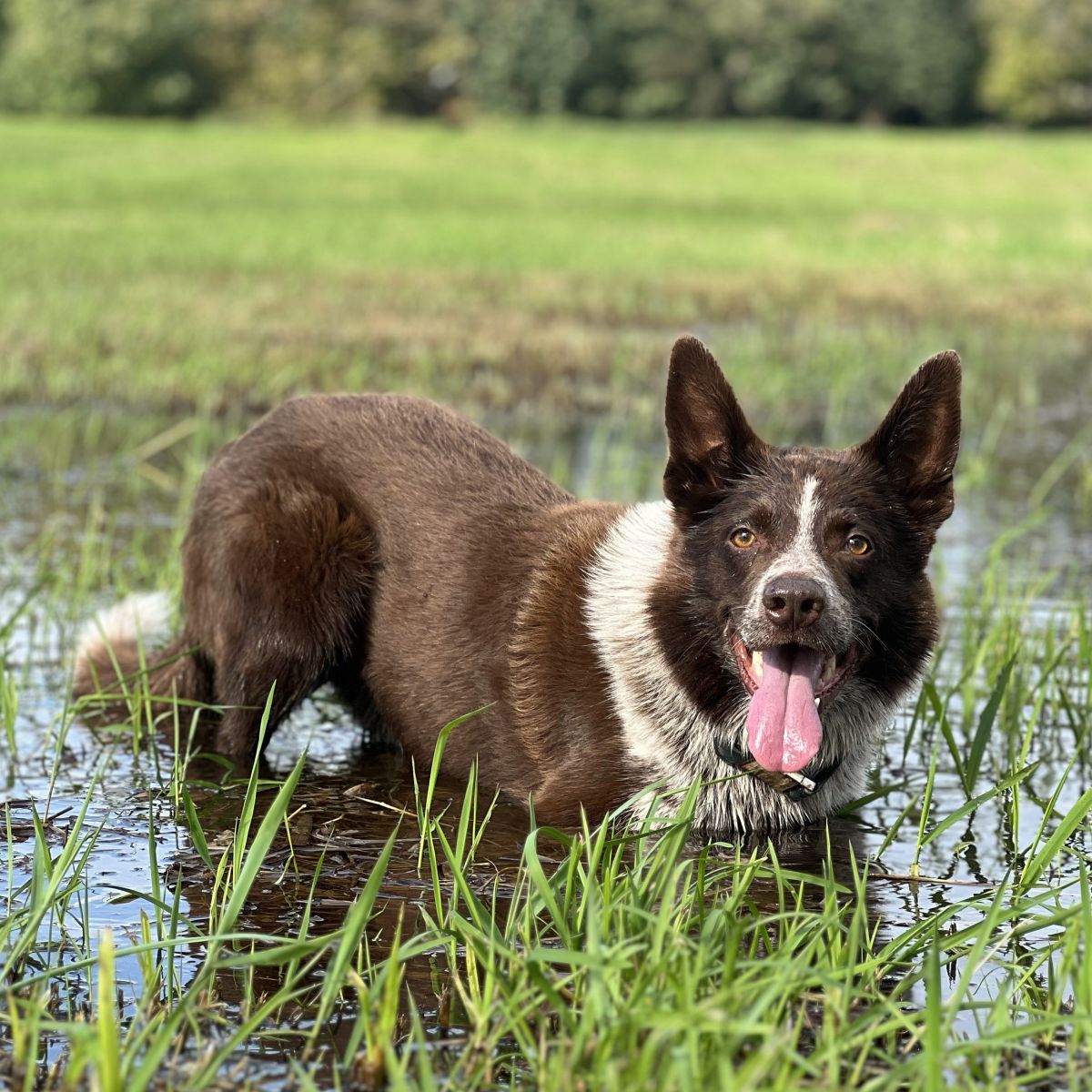
Hi! I’m Steffi. I am a biologist and a big time dog nerd. You are curious about coat color genetics? You’ve come to the right place! Read more.


